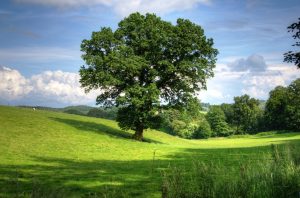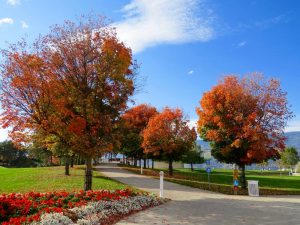
Choosing the Right Tree for Your Lawn
#1 Understand the Reasoning for Wanting a Tree in your Lawn
Why do you want a tree? Shade? Privacy? Outdoor décor? To build a treehouse? Knowing why you want a tree will help you when choosing the right tree that’s best for your lawn.
#2 Know what Type of Dirt you have/Know the Zone of the Tree
Some trees thrive in rich, moist, woodsy soil that is on the acidic side. Others thrive in alkaline soil which tends to be dry. While even others, like swamp red maples and bald cypress, prefer completely wet soil.
#3 Know how fast you want the Tree to Grow
Hardwoods (e.g. oak, maple) tend to be slow growers but live longer and grow bigger. If, for example, you need instant shade, a softwood would be your best choice. Softwoods (e.g. cedar, pine) are fast growers, but usually, they are smaller and don’t live as long.
#4 Know how big you want the Tree to be

Is your yard small or big? Make sure your tree is scaled to the surroundings. If you plant your tree near your house, a smaller tree would be best, while bigger/taller ones would be great farther out in the yard.
#5 Know the Amount of Effort/Work you will put in
Deciduous or evergreen? Deciduous trees lose their leaves in the fall and are bare in winter, while evergreen trees retain their foliage no matter what season it is. Even though deciduous trees may look beautiful with the multitude of colors, it can be a hassle to rake up hundreds of leaves every fall.
#6 Know the Faults of each Tree
While trees can provide assets, they also provide faults. Some have thorns, others have weeds, and many are messy. However, if you choose the correct tree, overlooking these faults will be no problem.
When to Plant Trees
#7 Know how much time it takes for Trees to Establish their Roots
You want trees to establish roots before stressors like high heat, low temperatures, or dehydration takes place.
#8 Understand what Tree you want to Plant
The best time to plant your tree depends on the type of tree you want to plant. For example, deciduous trees are best planted in the fall, but keep them well-watered even through winter. Evergreens are best planted in early fall, late spring, or any time that doesn’t expose them to extreme heat.
